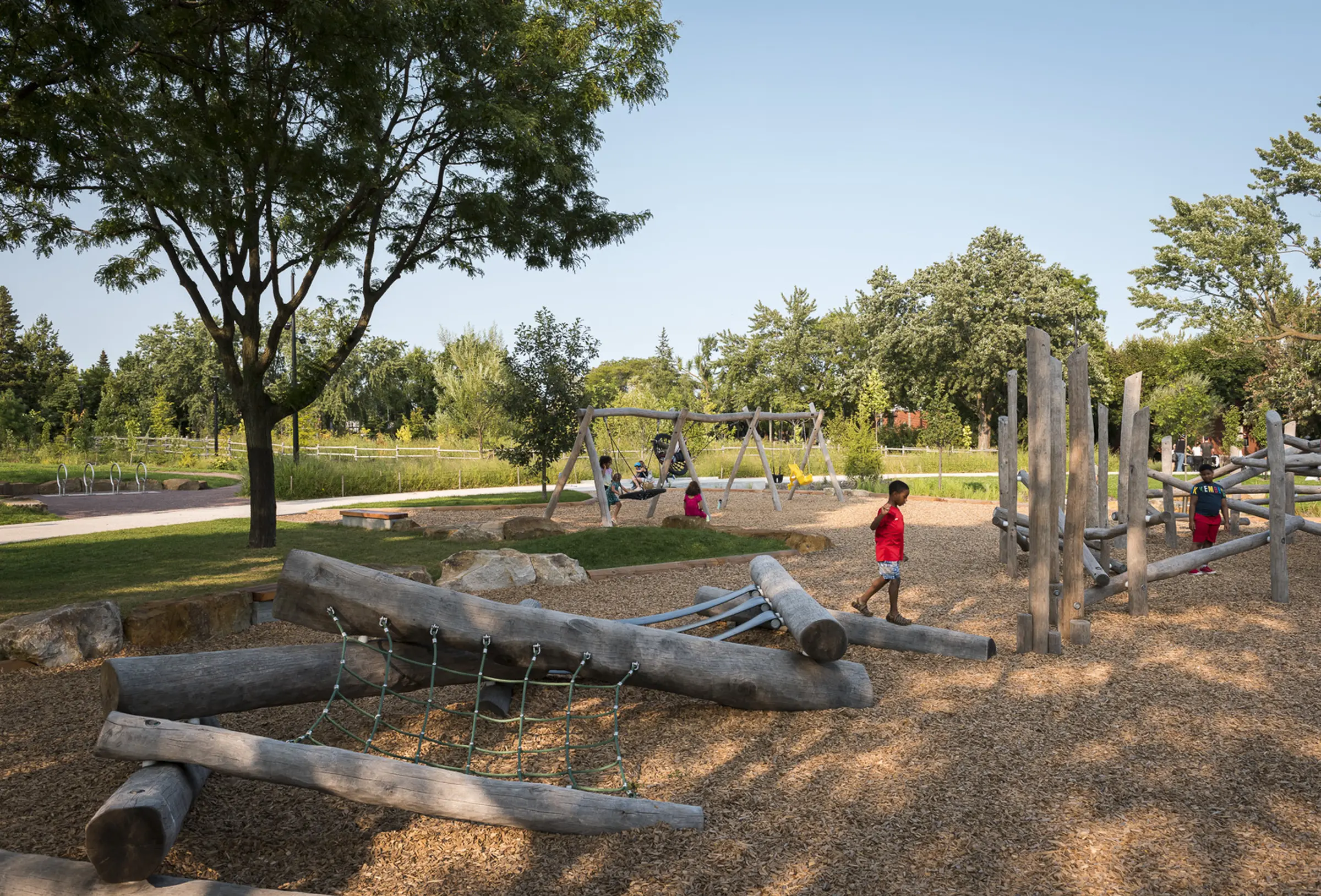Public spaces play a crucial role in community life and in our urban ecosystems. Rosemont Park, which we completed in 2023, is a shining example.
Over the past year, Rosemont Park has earned several prestigious awards, emphasizing its significance to communities and its innovative approach to sustainability. This recognition reflects our boldness and ingenuity in overcoming the challenges of developing a park of this scale (13,000 m²) to serve a dense population with diverse needs.
Awards received
CSLA Awards of Excellence — 2024 National Award Recipient
17th edition of the Grands prix du design: Grand Winner — Landscape & Territories ; Gold Certification — Landscape Architecture, Public Space
Rethinking The Future Awards — First Award, Public Landscape (Built)
Architizer A+ Awards — Special Mention 2024
Three unique experiences
Three zones were established in the park to create distinct yet complementary atmospheres: The Plaza, The Glade, and The Urban Woodland. Together, they accommodate a range of activities while making the vast park feel welcoming and accessible.
The respective designs are unified by their organic feel, whether through the use of curves, hardy plant species, or eco-friendly materials.
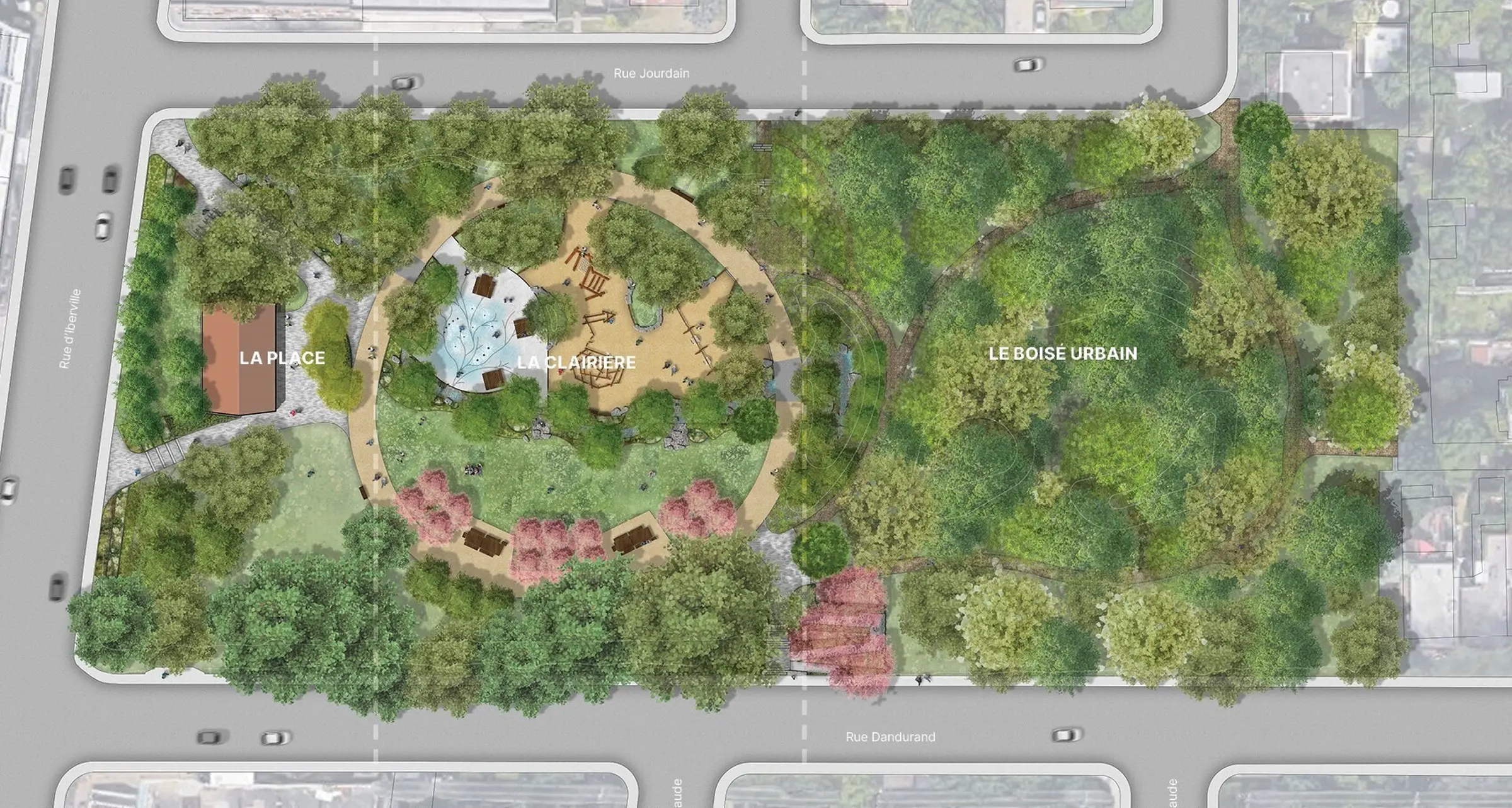
©Axle Von Garde Cabahug
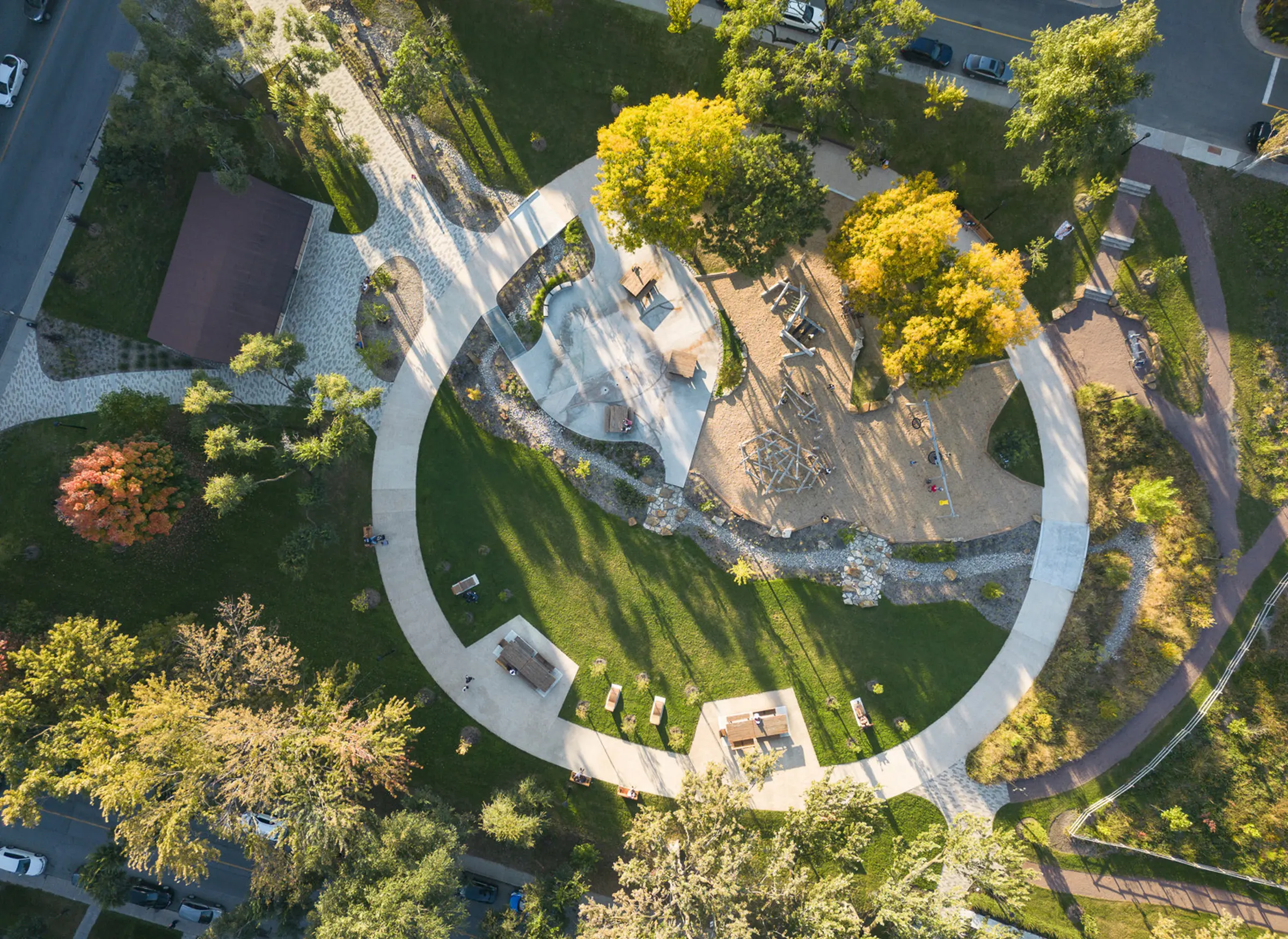
©Vincent Brillant
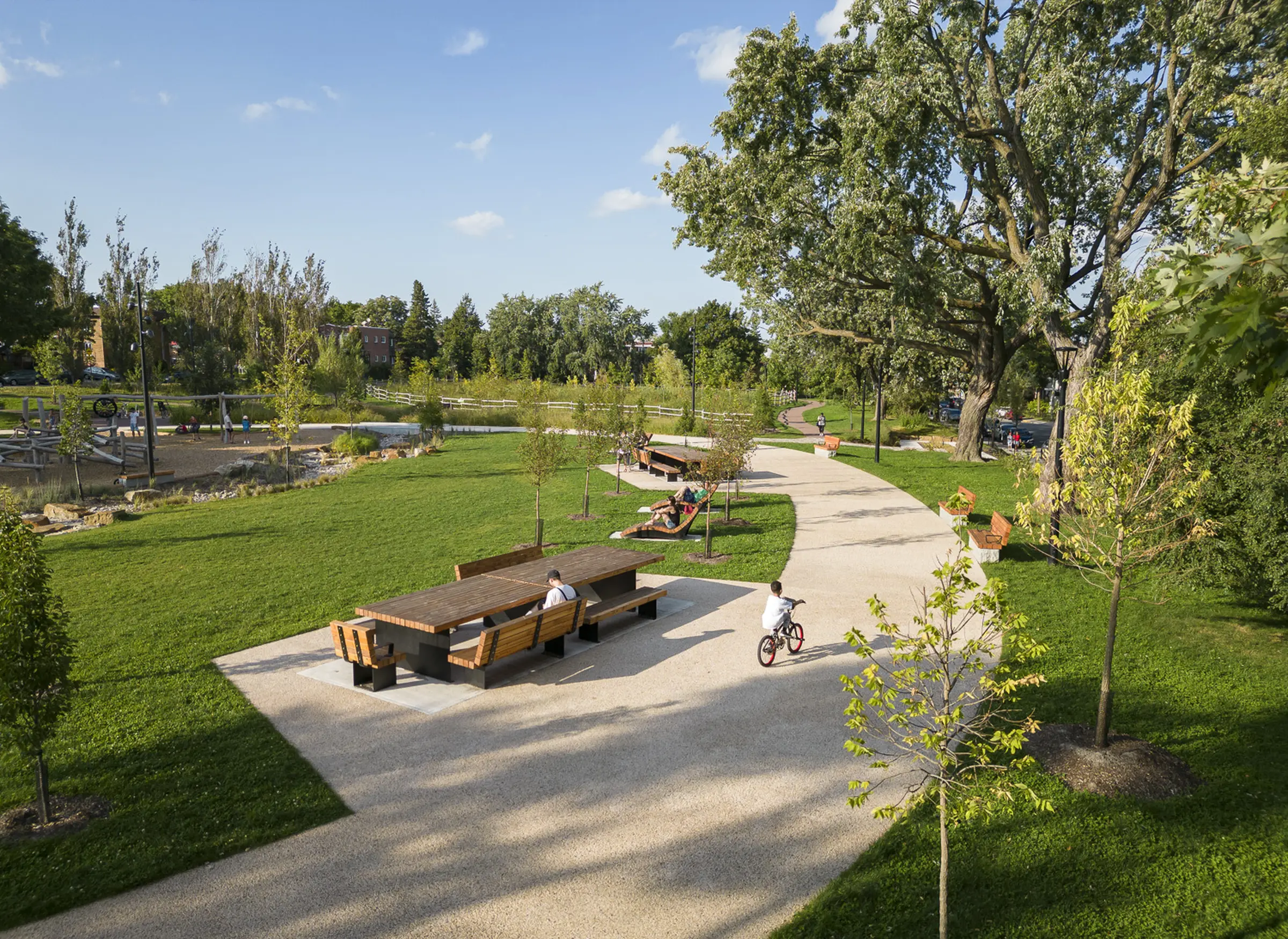
©Vincent Brillant
The Plaza. The Plaza has two main entrances and includes a chalet that houses restrooms and a Rosemont-La-Petite-Patrie Éco-Quartier point of service. Citizens can also access a bicycle stand and trails that lead intuitively to other areas of the park.
The Glade. Visitors then enter The Glade, a multiuse space that encourages recreation and relaxation. On one side, children are delighted by wooden play structures and a splash pad, configured to appeal to their creativity and, by extension, encourage their self-confidence. Elsewhere, a large field of clover is perfect for all types of activities (frisbee, picnics, games of catch, and more). This section is also dotted with urban furniture. A dry river runs between them, its mist fountains offering refreshment to passersby. This water-management system combines both function and aesthetics with its rocks, pebbles, and vegetation. It is yet another environment for curious children to explore.
The Urban Woodland. A large part was reserved to support and develop the neighbourhood’s biodiversity. The Urban Woodland renaturalizes the sector with more than 550 trees (the oldest were preserved in the development). These include fruit trees and melliferous species planted throughout. Inspired by the Miyawaki method, this microforest transcends the conventional urban landscape and offers residents a special connection with nature.
An inspiring sponge park
In the face of climate change, municipalities are expected to show leadership to support community well-being. Public spaces designed with a long-term vision offer possible solutions. With this in mind, the project embraced a sponge park concept. Many water-management tools were leveraged: a dry river, a retention basin, diversified flora, permeable paving materials throughout the site, to name a few.
These measures allow water to reintegrate its natural cycle and strengthen the neighbourhood’s climate resiliency. This type of design opens the door to other developments capable of becoming true vectors of adaptation and sustainability.
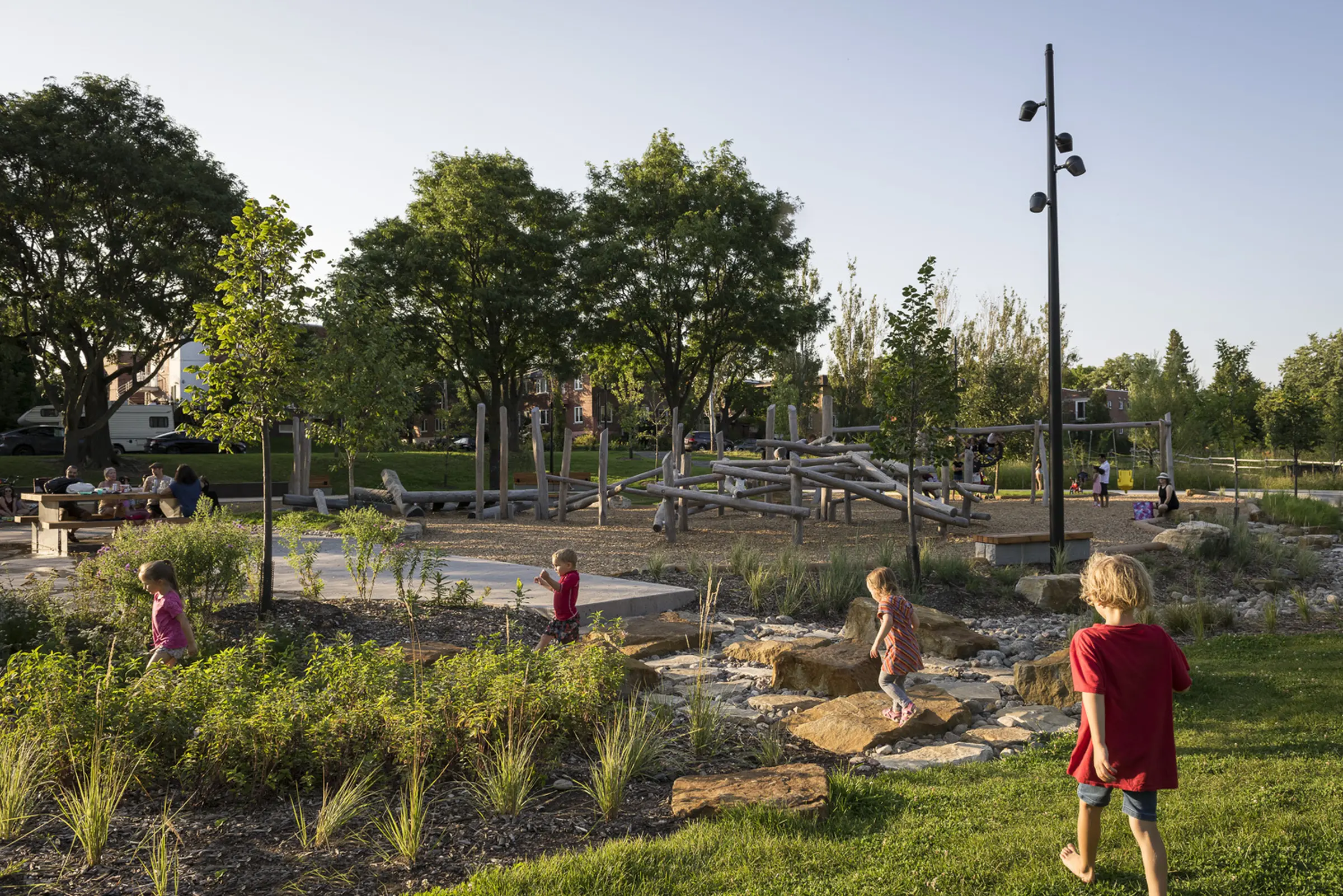
©Vincent Brillant
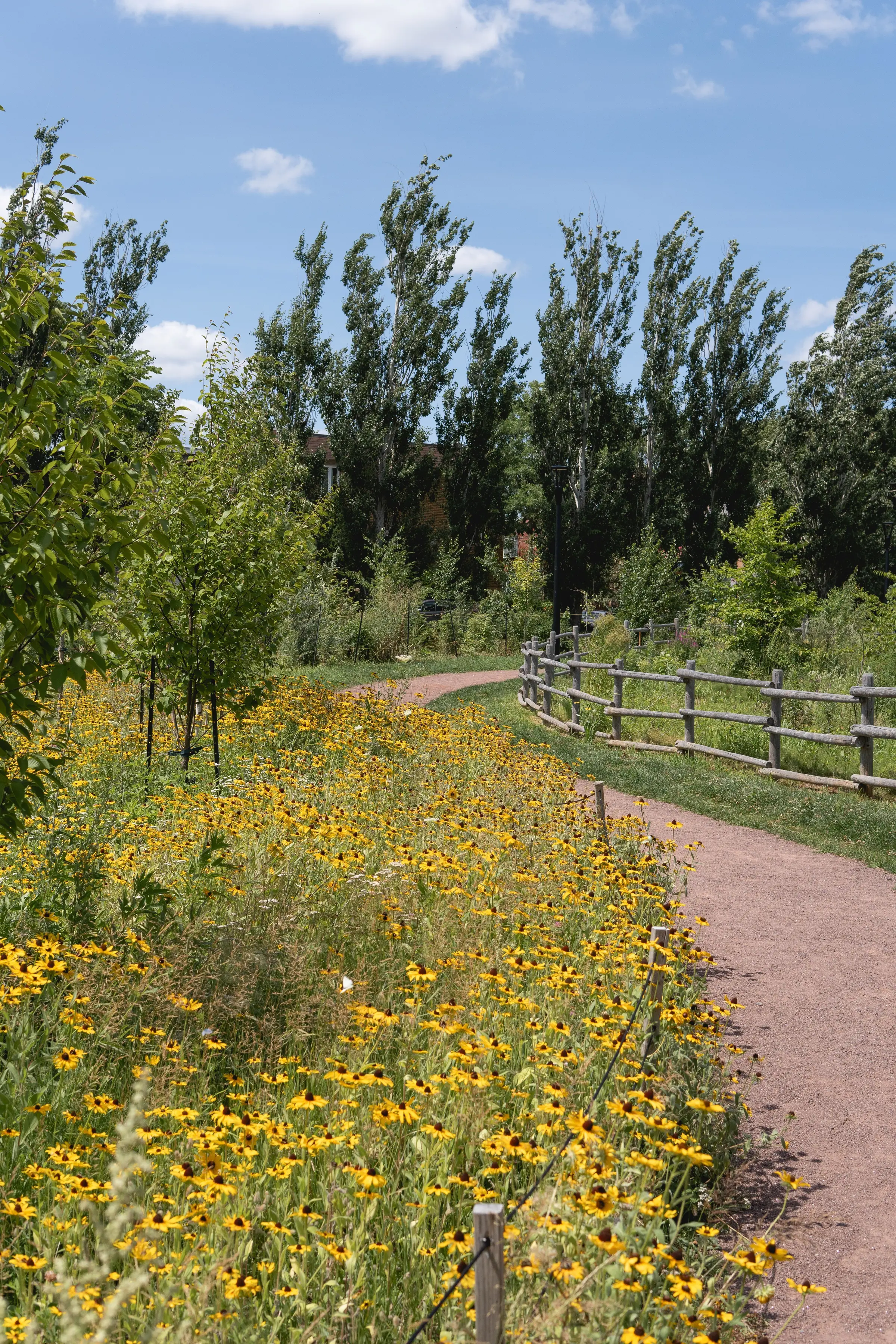
©Zoé Maltais
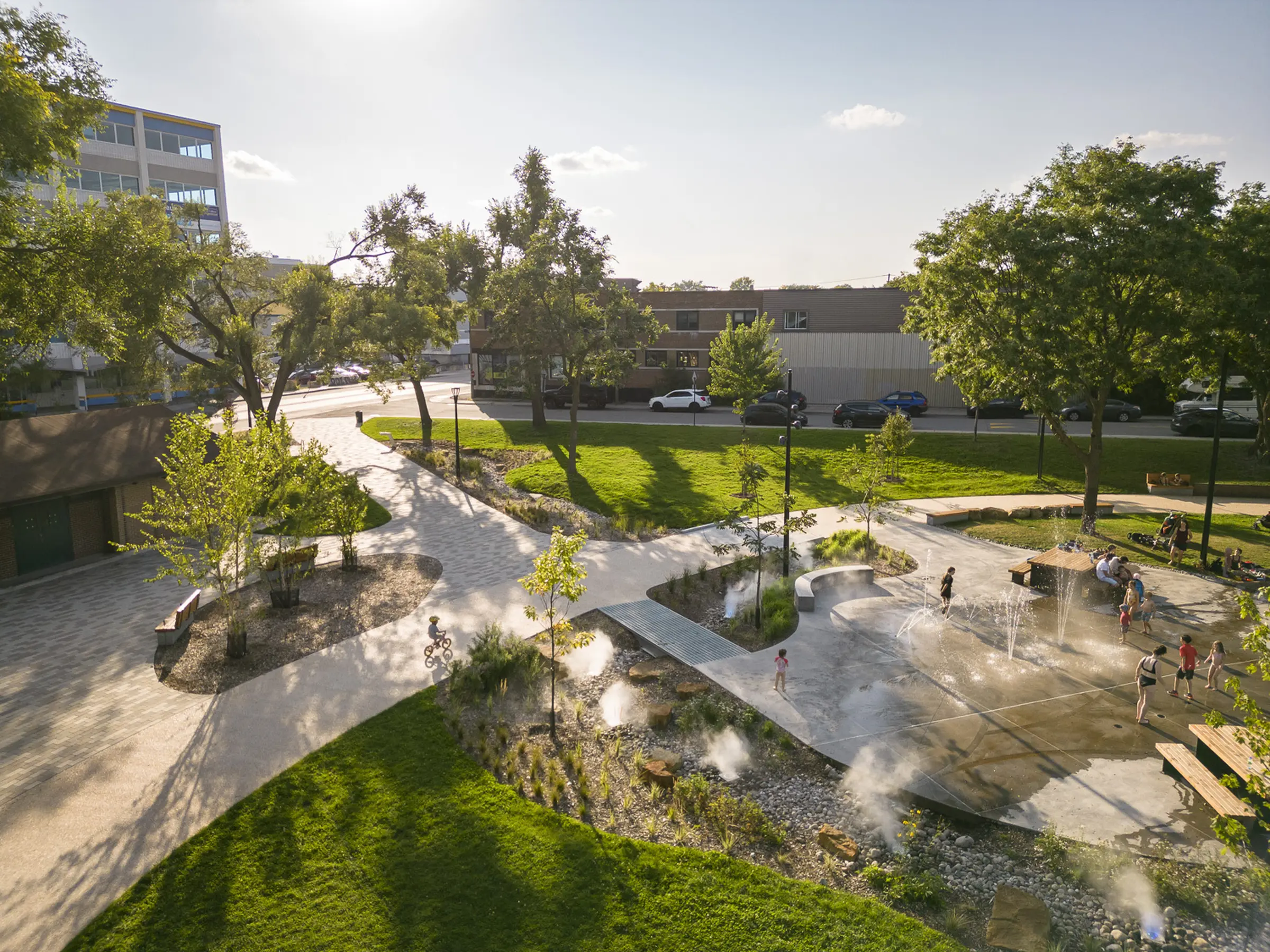
©Vincent Brillant
“More trees and diversity, even microforests, and also more clover and rain gardens. Climate change is forcing us to rethink how urban parks are developed, where grass has been king for a long time.”
Read the article published in La Presse
Rosemont Park is positioned as an excellent example of its kind. It is home to a living ecosystem that is energized by the community, transforms over the seasons, and evolves in symbiosis with nature. This urban oasis is essential, improving air quality, supporting local wildlife, and contributing to the emotional and physical health of its residents. Function, aesthetics, innovation, ecology, and social inclusion meet here, at the crossroads of the needs of today and tomorrow.
